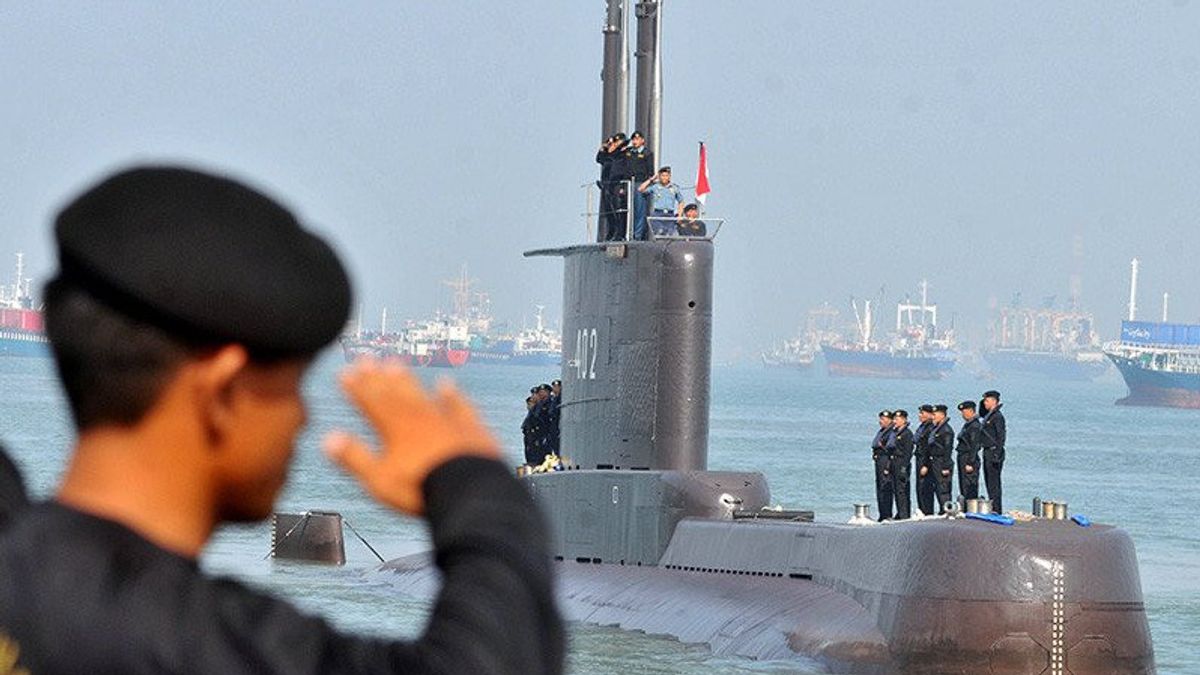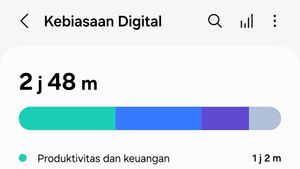JAKARTA - At exactly 03.00 WITA, KRI Nanggala-402's oxygen reserves ran out. However, there has been no latest news from the submarine with 53 crew that went missing in Bali waters.
"Anyway, until tomorrow's deadline at 03.00, it is maximized today," said the Head of the Indonesian National Armed Forces (Kapuspen) Major General Achmad Riad in a press conference at the Base Ops Base Ngurah Rai, Badung, Bali, Friday, April 23.
The targeted search area is 60 miles from the waters of North Bali. This is based on the discovery of a fuel spill that was found Thursday, April 22.
The Chief of Naval Staff (KSAL) Admiral Yudo Margono confirmed that the KRI Nanggala-402 submarine that was lost in Bali waters was fit for use even though it was old. Moreover, this submarine has received an eligibility letter from the Navy's Materiel Feasibility Service.
"The Nanggala-402 submarine is ready, both personnel and material. The personnel are complete, the material has already received the Dislaikmatal eligibility letter," Yudo said in a press conference broadcast on YouTube Puspen TNI, Thursday, April 22.
He said that this ship was built in Germany in 1977 and received by the Indonesian Navy in 1981. So far, the Nanggala-402 has a history of firing 15 torpedo head exercises and twice firing the war head torpedoes.
"So the KRI Nanggala is ready for combat, so we send it, we involve it to fire the torpedo of the head of training and the head of war," he said.
Admiral Yudo Margono said that the KRI Nanggala-402 submarine which disappeared in the northern waters of Bali had oxygen reserves for up to 72 hours after being declared missing.
"Regarding the KRI's oxygen capability, if the blackout condition is like this, it can take 72 hours. So, it will take approximately three days," Yudo said in a press conference, Thursday, April 22.
"So yesterday, when contact was lost at 03.00, it will be 72 hours until Saturday at 03.00," he added.
9 Point Search OperationThe search operation for the KRI Nanggala-402 is still being carried out. There are nine search operation points in Bali waters.
"The data we received up to this afternoon are nine points. The nine points include spills and a very strong magnetic force. So there are nine 9 points spread out in a radius so the distance is 23 nautical miles (NM), maybe around 10 NM in area, "said Kapuspen TNI Major General TNI Achmad Riad in a press conference at the Base Ops Lanud Ngurah Rai quoted by Antara, Friday, April 23.
In addition to the distribution of search points, licensing for ship assistance from abroad has also been completed, including the Poseidon ship from the United States and also HMAS Ballarat and HMAS Sirius from Australia.
"The Poseidon ship, the United States and the Australian ship have already been approved. So everything is clear, and all of the ships are already there," he said.
Regarding the safety equipment for the KRI Nanggala-402, the former Commander of the KRI Nanggala-402, Lieutenant Colonel (P) Anshori, explained that the safety equipment is complete and complies with international standards imposed by all submarines in the world.
"So all of this equipment is adjusted to the number of personnel on board, including the 53 personnel. So if there are personnel other than the 53 people, the submarine personnel there will automatically be reduced because it will adjust to the number of safety equipment available. on the ship, "he said.
BPPT IntervenedThe Agency for the Assessment and Application of Technology (BPPT) assisted in the search for the Indonesian Navy submarine KRI Nanggala-402 which lost contact in Bali waters.
To assist in the search for the ship, BPPT's magnetometer was loaned. This tool has been installed at KN SAR Arjuna belonging to the National Search and Rescue Agency (Basarnas) to detect magnetic intensity anomalies in the search process for submarines in marine waters.
"The magnetometer is used to capture anomalous magnetic intensity which is quite strong," said Head of the BPPT Marine Survey Technology Center, Djoko Nugroho, quoted by Antara, Friday, April 23.
In addition, there is also a BPPT expert who is directly on the ship to operate the magnetometer.
"The important thing is that the sensor or magnetometer device is indeed after being captured, after the data is collected, it is processed immediately so that it becomes information. I think it requires special expertise," he said.
Djoko said that if a magnetic anomaly is found, a scan must be immediately carried out using a Multibeam Echosounder (MBES) sonar transmitter.
"Scanning with the Multibeam Echosounder equipment with a high level of accuracy such as the one in KR Baruna Jaya and the Side Scan Sonar will strengthen the search," he said.
The English, Chinese, Japanese, Arabic, and French versions are automatically generated by the AI. So there may still be inaccuracies in translating, please always see Indonesian as our main language. (system supported by DigitalSiber.id)













